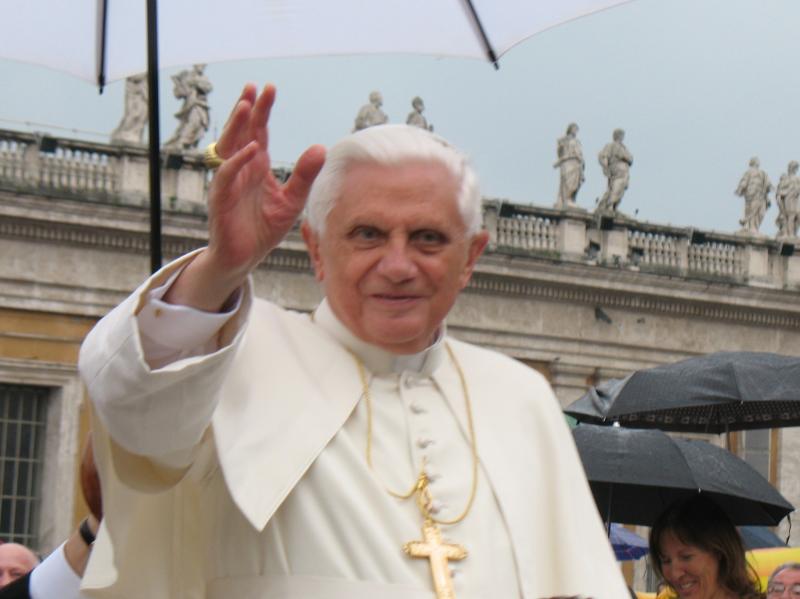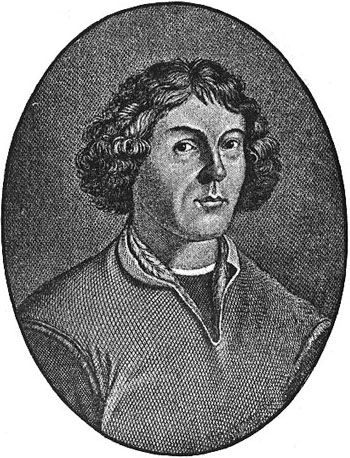In Douglas Adams’s The Hitchhiker’s Guide to the Galaxy, civilizations on two different planets—because of a fundamental miscommunication—fought for thousands of years, destroying their entire galaxy. When they finally realized that the whole thing had been a ghastly mistake resulting from linguistic error, the two opposing battle fleets settled their few remaining differences...and launched a joint attack on our own Milky Way Galaxy:
For thousands more years the mighty ships tore across the empty wastes of space and finally dived screaming onto the first planet they came across—which happened to be the Earth—where due to a terrible miscalculation of scale the entire battle fleet was accidentally swallowed by a small dog.
What happens when two leading intellectuals argue about something as fundamental to our understanding of the world as scientific concepts like evolution, and yet fail to understand each other? This appears to be the case in an exchange between the Italian atheist and mathematician Piergiorgio Odifreddi and Pope Emeritus Benedict XVI. In 2011, Odifreddi wrote a book entitled Dear Pope, I am Writing to You in which he criticized Benedict’s theology as “science fiction.” Benedict replied in a letter to the Italian newspaper La Repubblica, courteously thanking Odifreddi for his book, but arguing that the latter had substantially misrepresented his thinking.
This serious exchange is made more interesting by the possible misunderstanding of Pope Benedict’s language in characterizing scientific hypotheses and theories as “science fiction.” He is not using fantascienza in the sense of the genre popularized by  Ray Bradbury. Rather, he uses “fiction” in the sense of hypotheses interpreted as models or explanatory devices, and it is perhaps unfortunate that he doesn’t use the word modello (model). Science journalist Stacy Trasancos has summarized this exchange and contends that if we assume Pope Benedict to be rejecting evolution, we essentially fail to understand what he means. In his letter Benedict writes:
Ray Bradbury. Rather, he uses “fiction” in the sense of hypotheses interpreted as models or explanatory devices, and it is perhaps unfortunate that he doesn’t use the word modello (model). Science journalist Stacy Trasancos has summarized this exchange and contends that if we assume Pope Benedict to be rejecting evolution, we essentially fail to understand what he means. In his letter Benedict writes:
Science fiction exists, on the other hand, in the ambit of many sciences. That which you explain about theories concerning the beginning and the end of the world in Heisenberg, Schrödinger, etc., I would designate as science fiction in the good sense of that phrase: they are visions and anticipations, in order to reach a true knowledge, but they are also, precisely, only imaginations with which we seek to come close to reality.
Benedict holds up the “selfish gene” hypothesis of Richard Dawkins as a classic example of a “fiction” in science. A more felicitous term (as noted above) for explaining the way genes operate in the genome would be to describe the idea of the “selfish gene” as a model.
In light of Pope Benedict’s widely known endorsement of evolution, it is unlikely he rejects it as merely “science fiction.” As Joseph Cardinal Ratzinger, Benedict gave his imprimatur to the scientific account of evolution in broad outline in Communion and Stewardship, a work authored by the International Theological Commission:
Since it has been demonstrated that all living organisms on earth are genetically related, it is virtually certain that all living organisms have descended from this first organism. (Paragraph 63)
Cardinal Ratzinger endorsed human evolution well beyond the cautious position outlined in Humani Generis:
While the story of human origins is complex and subject to revision, physical anthropology and molecular biology combine to make a convincing case for the origin of the human species in Africa about 150,000 years ago in a humanoid population of common genetic lineage. (Paragraph 63)
As pope, Benedict XVI endorsed a major conference on the theme of “Evolution: Facts and Theories” during the Darwin bicentennial year (2009). This conference at the Pontifical Gregorian University in Rome drew hundreds of scientists, theologians, philosophers, and historians—of all faiths and of none—to discuss state-of-the-art theories on evolution and its theological interpretation.
In summary, it would be perverse to conclude anything other than that Pope Emeritus Benedict XVI accepcts evolution as a scientific theory. Any misunderstanding on this point is an unfortunate result of his having employed the phrase La fantascienza esiste, d'altronde, nell'ambito di molte scienze (“Science fiction exists, on the other hand, in the ambit of many sciences.”)
However, I would go further than Stacy Trasancos in her above cited essay explaining the pope’s use of the term “science fiction.” Most of us commonly use models or symbols to express realities too complex for words. For Douglas Adams in The Hitchhiker’s Guide the use of the number 42 for the meaning of “life, the universe, and everything” was symbolic of his view of the absurdity of our existence, a way to laugh at a universe that does not care about our existence.
Both science and theology use models or “fictions” to explain or portray concepts, and as George Box has said, “essentially, all models are wrong, but some are useful.” Science uses models to explain ideas like descent with modification or the interaction of subatomic particles. Theology employs models or “theological fictions” to picture concepts like God, or salvation, or life after death. For example, Bishop Augustine of Hippo (354-430) argued that a model of the divine relationship between Father, Son, and Spirit may be found in the human cognitive faculties of memory, understanding and will. Theologians today use various theological models or “fictions” to express doctrines of “sin” and “salvation.” (These are nicely detailed, for example, in George Murphy’s Models of Atonement.)
In the centuries-long involvement of the Church with developing science, natural philosophers used “fictions” to foster imaginative thinking on scientific topics. In the fourteenth century—in reaction to the stranglehold of a dogmatically interpreted Aristotelianism—natural philosophers began experimenting with novel  scientific models or “thought experiments” that sometimes led to new ways of thinking. Scholars began to ask themselves, might God have created more than one world? Could God move a world in a rectilinear direction in space in such a way that in its place would be left a vacuum? And if God could create a vacuum between worlds, could God create a vacuum on Earth? Might a moving Earth revolve around a stationary sun? The exploration of these questions led to imaginative new ideas like Copernicus’ revival of the heliocentric theory, Torricelli’s demonstration of a vacuum, and the reproposal of old idea of the pulmonary circulation of the blood.
scientific models or “thought experiments” that sometimes led to new ways of thinking. Scholars began to ask themselves, might God have created more than one world? Could God move a world in a rectilinear direction in space in such a way that in its place would be left a vacuum? And if God could create a vacuum between worlds, could God create a vacuum on Earth? Might a moving Earth revolve around a stationary sun? The exploration of these questions led to imaginative new ideas like Copernicus’ revival of the heliocentric theory, Torricelli’s demonstration of a vacuum, and the reproposal of old idea of the pulmonary circulation of the blood.
Moving past Aristotle freed later medieval natural philosophers to entertain imaginative thought experiments in unorthodox, or even—horrors!—anti-Aristotelian directions. Catholics such as Copernicus and Galileo and Roger Boscovich operated in the longstanding tradition of Church-sponsored universities and—together with their Protestant counterparts—developed a revolutionary new understanding of the cosmos.
While Pope Benedict might have used a less ambiguous term than "science fiction" in his letter to Piergiorgio, he would have been in good company in speaking in terms of scientific models. The reality is that Pope Emeritus Benedict XVI understands and endorses the 21st century idea of a vast, ancient, and evolving cosmos. We would do well to bear this in mind in constructing theological models that are in dialogue with modern science.
